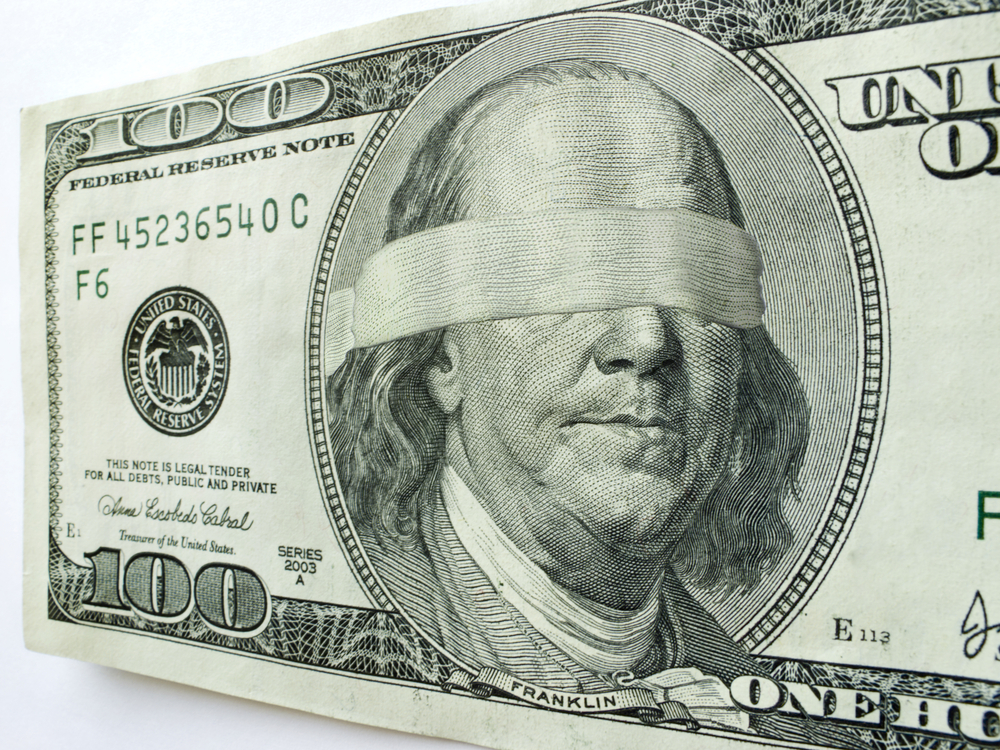Today, a one-question physics test: Can you inflate a balloon by taking out the air?
The answer is obvious, so you pass the test.
And, yet, Wall Street is defying the same basic physics. It’s rising (to rarefied levels) even as money has been flowing out.
How can this be?
Well, to me, it’s another sign that something wicked this way comes.
Two data points tell this story:
- So far this year, investors have pulled nearly $80 billion out of equity mutual funds and exchange-traded funds (ETFs). Every month but one has been a down month, and so far through mid-September, the equity mutual fund outflows have surpassed $5 billion. That’s an indication that Main Street investors are not involved in the current euphoria on Wall Street.
- So far this year, foreigners have pulled $67 billion out of America, according to Treasury Department data on international capital flows. That’s an indication that, on the whole, foreigners have been selling U.S. assets.
So back to our physics test: How is it that Wall Street keeps hitting new highs on an almost daily basis when the air it needs is leaving that balloon?
I have a two-pronged theory, the first part of which I detailed in my dispatch on August 31: Wall Street is higher, in part, because companies are using their cash to buy back their own shares instead of investing in growing their businesses.
It’s financial Ecstasy. The market is under a psychotropic influence abetted by the C-suite and boards of directors that are spending shareholder cash to buy stock in record amounts and at imprudently high levels. In the last quarter alone, share buybacks and dividends consumed every penny of corporate profits, plus another 18%. How any CEO or chairman can justify buying stock when the market trades at more than 20 times earnings is baffling (and should probably lead to shareholder lawsuits or, at the very least, shareholders voting that management team out of office).
The Peak Is Coming
The second prong of my theory: The buyers who are in the market are meeting little resistance from natural sellers.
In the midst of a mindless race higher in stocks — a race predicated on precisely zero fundamentals — bears simply aren’t willing to wade in and play the other side of the market. They’re not stupid; they know what’s coming. In fact, they tend to be the smartest investors on the Street.
For them to short stocks right now would be the opposite of trying to catch a falling knife, which, I guess, is something like trying to lasso a rocket. Even though stocks are trading at more than 25 times trailing earnings — an egregious valuation — we haven’t yet hit the final blow-off stage when stocks power into their ultimate exuberance that then propels them into a historic flameout.
At that point, we’re looking at highs that could see the S&P shoot to my estimate of 2,322 — or another 7.5% rise from here. Thereabouts, the market will top out, bears will establish their positions, and the buyers who are drunkenly throwing money at the market today will have run out of fuel to push stocks even higher … and then it’s just a dive into the abyss that sees the S&P finally arrest its fall somewhere in the 950 to 1,200 range. That’s a 44% to 56% nosedive in stocks.
Wall Street Is at a Crossroads
Stocks simply cannot keep pressing higher, particularly when the money necessary to support higher prices is demonstrably flowing out of mutual funds, ETFs and U.S. assets. And companies cannot keep buying back their shares.
There comes a point when they realize that A) they cannot continue buying their shares at ever-richer levels, and B) they must funnel some of their profits into investments that strengthen the business and the workforce. And at that moment, some — maybe even a large portion — of the money propping up Wall Street today dries up … and the balloon finally follows the laws of physics.
Putting money into the economy will certainly benefit the economy in that moment. But asset prices will still collapse simply because the prices have been propped up for too long, and they have been pushed too high by financial engineering.
These things always correct.
Always.
Which means that if you’ve not started lightening your exposure to Wall Street, now is the moment to begin doing so.
Until next time, good trading…

Jeff D. Opdyke
Editor, Total Wealth Insider



